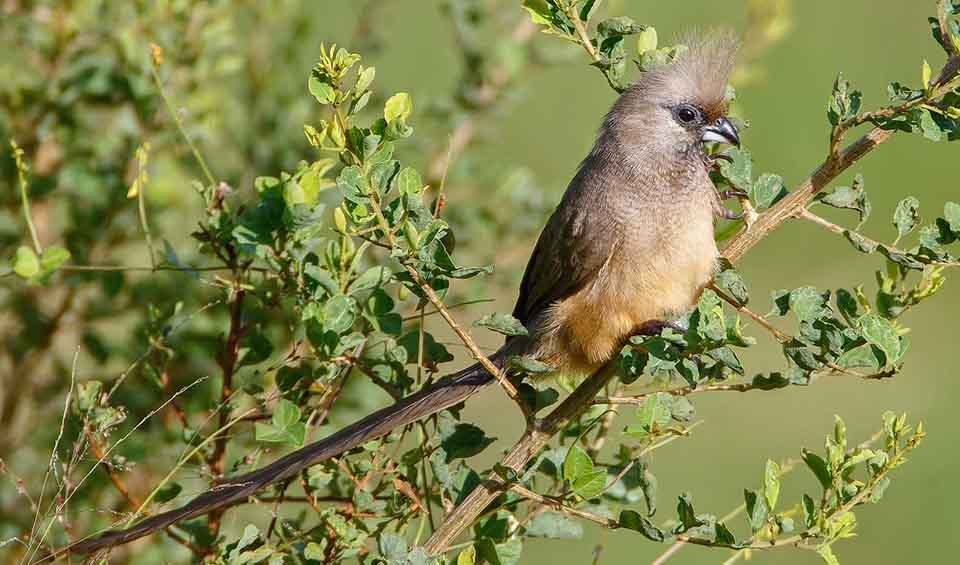A curious and engaging presence in the avian world. It is the largest of the mousebird family and can be identified by its lengthy tail, which makes up over half of its total length of 35 cm (14 inches). This distinctive feature, coupled with their soft, greyish-brown plumage speckled with white, gives the bird an appearance that is both unique and striking.
Native to the African continent, these birds are well adapted to a variety of environments but show a particular affinity for the savannahs, where their natural habitat provides the resources they require. Interestingly, the Speckled mousebird has demonstrated a remarkable ability to thrive in urban settings as well. They are commonly observed in backyard gardens, where they exhibit a level of comfort with human activity, making them a familiar sight for many residents.
Unlike many of their avian counterparts, Speckled mousebirds are not celebrated for melodious songs. Their vocalizations are often described as a series of clicks, creaks, and whirring sounds, which, while lacking in musicality, serve as an effective means of communication within their social groups. These birds are highly gregarious, rarely seen alone, and their social structures are complex.
One of the more peculiar habits of the Speckled mousebird is dust bathing, a communal activity that involves groups of birds lying in dust patches and flicking dust over their feathers with their wings and feet. This behavior is not merely for cleanliness; it is believed to help maintain feather health and deter parasites. Another interesting trait is their ingestion of small pebbles, a practice known as gastrolithiasis, which aids in grinding up and digesting food within their gizzards, as these birds lack the strong jaw muscles for mastication.
Distribution
 Angola
Angola Botswana
Botswana Burundi
Burundi Cameroon
Cameroon Central Af. Rep.
Central Af. Rep. Congo-Brazzaville
Congo-Brazzaville DR Congo (Kinshasa)
DR Congo (Kinshasa) Equatorial Guinea
Equatorial Guinea Eritrea
Eritrea Eswatini
Eswatini Ethiopia
Ethiopia Gabon
Gabon Ghana
Ghana Kenya
Kenya Lesotho
Lesotho Malawi
Malawi Mozambique
Mozambique Nigeria
Nigeria Rwanda
Rwanda Somalia
Somalia South Africa
South Africa South Sudan
South Sudan Sudan
Sudan Tanzania
Tanzania Uganda
Uganda Zambia
Zambia Zimbabwe
ZimbabweAnything we've missed?
Help us improve this page by suggesting edits. Glory never dies!
Suggest an editGet to know me
Terrestrial / Aquatic
Altricial / Precocial
Polygamous / Monogamous
Dimorphic / Monomorphic (size)
Active: Diurnal / Nocturnal
Social behavior: Solitary / Pack / Herd / Flock
Diet: Carnivore / Herbivore / Omnivore / Piscivorous / Insectivore
Migratory: Yes / No
Domesticated: Yes / No
Dangerous: Yes / No




